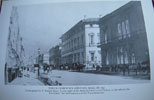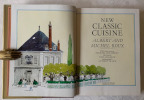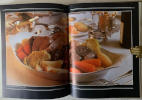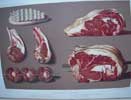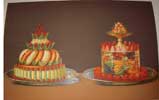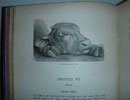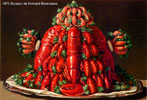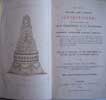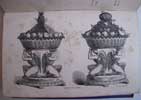The Queen's Royal Cookery:
OR,Expert and ready Way for the Dressing of all Sorts of Flesh, Fish: Either Bak'd, Boil'd, Roasted, Stew'd, Fry'd, Broil'd, Hash'd, Frigasied, Carbonaded, Forc'd, Collard'd, Sous'd, Dry'd, etc. After the Best and Newest Way. With their several Sauces and Salads. And making all sorts of PICKELS. ALSO Making Variety of Pies Pasties, Tarts, Chees-Cakes, Custards, and Creams, etc. WITH The ART of Preserving and Candying of Fruits and Flowers; and making of Conserves, syrups, Jellies, and Cordial Waters. Also making several sorts of English Wines, Cyder, Mead, Metheglin. TOGETHER, With several Cosmetick or Beautifying Waters: And also several sorts of Essences and Sweet Waters, by Persons of the highest Quality. By T. Hall, Free Cook of London. The Second Edition. Lonodn: Printed for C. Bates, at the Sun and Bible in Gilt-spur-street, in Pye-corner: And A. Bettesworth, at the Red Lion on London-Bridge, 1713. Licenses according to Order.
12 mo. Woodcut frontispiece with the head of Queen Anne above three sections. On the recto of the Frontis there is a manuscript note in ink -- ' Elizabeth Lidlow her book 1796 Given by her Grandfather' Title page. 5-6. The Preface. 7-180. 2 feps. A full page woodcut of pies on p.133. The whole text lightly age browned throughout. Contemporary full dark brown calf boards neatly relaid, with a nice patina. The spine is modern dark brown calf with raised bands and gilt lettering. A very scarce book.
- This second edition is very scarce with only a handful of copies located in the US; at Cornell, Kansas State, the Lib. Of Congress and a private owner. In UK there are three recorded; one each in the BL, Cambridge and the Wellcome Institute. Cagle was not able to locate a first and Bitting’s copy is 1730. There were six editions up to 1734. The Queen's Royal Cookery, by T. Hall, was first published in 1709 (with the BL also holding one of only three known). As well as a wide variety of basic culinary recipes, the book contains instructions for preserves, candies, cosmetics and beautifying waters. It is one of a number of books claiming to reveal the secrets of the royal kitchens, a highly fashionable subject during the 17th and 18th centuries. Queen Anne, who reigned from 1702-1714, was a rich source of gossip, and the public seemed to have an endless fascination for any information gleaned from beyond the palace walls. The production of art and literature prospered during Her reign. Throughout this period booksellers churned out popular recipe books, fully aware of the commercial viability of recipes linked to prestigious chefs. Unfortunately many of the books were thrown together by money-making charlatans who had simply filched their material from existing publications. Forty of T. Hall's recipes were taken directly from 'The Closet of the Eminently Learned Sir Kenelm Digby' (1669). Never the less an interesting book with the 17th century styled frontis of three engraved sections; A woodcut portrait of Queen Anne over a working kitchen scene, a pastry kitchen scene and a chymistry (chemistry) scene, which actually looks like a small distillery. Mrs Pennel - p145, describes Hall as a Free Cook of London, with little else known about him. Oxford p52, Cagle p719, Maclean p65.





click on image to enlarge

Antiquarian category
ref number:
11031 











